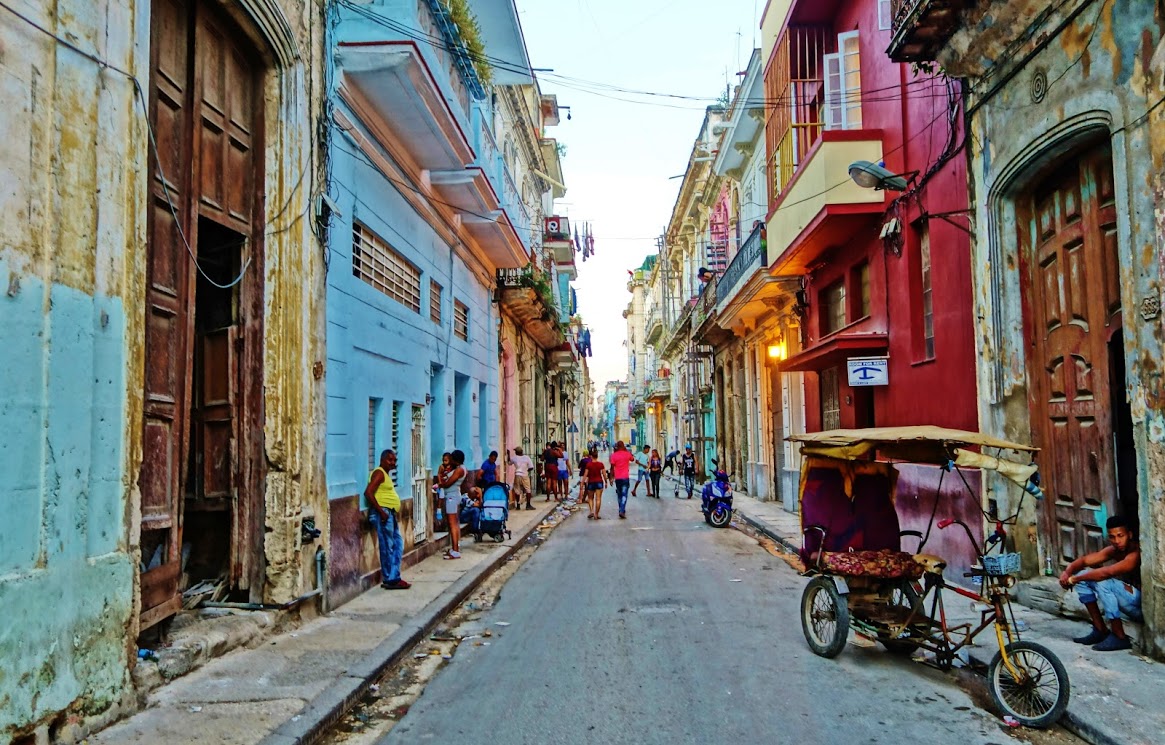
By : Kevin Dimetres
Like an untethered live wire, Havana sizzles at a single touch. Rumba music serenades the city from the balconies of colonial mansions as mango juice cups are hawked from their first floor window sills. Fiery competitions of street-corner domino games punctuate the perpetual haze of cigar smoke and automobile exhaust fumes. Classic American cars cruise through downtown with Hollywood panache, peddling rides to the mesmerized tourists who stare back in awe, marveling at how such a place could exist in the here and now.
The currents of Cuban Santeria flow through Havana’s urban landscape like a swaying party piñata ready to burst. The multi-colored beaded-bracelets and necklaces adorning the local residents are far too ubiquitous to be happenstance; these stylish accessories are symbolic displays of mysticism. The patterns of color signify a higher calling—a devotion to the Orishas, the Santeria gods and goddesses of West African lore.
Famously referred to as a “Latin-African country” by Fidel Castro, the fusion of African, Latino, and native Taino cultures gave rise to the supernatural worldview known today as Santeria. The assortments of saints and sacred relics decorating the homes of Havana reveal a syncretized belief set which blends elements of Catholicism with the Yoruba religious traditions of West Africa.
Across the harbor from the tourist traps of Old Havana, the inosculation of the country’s spiritual roots are on full display in Guanabacoa, a local community with longstanding Afro-Cuban traditions. Far from the Hemingway-inspired daiquiris and Havana Club cocktails served along the city’s main thoroughfares, I wanted to dig beneath the surface of the dogma and experience the realm of Santeria in its purest form.
A direct ferry to the port town of Regla brought me side-by-side with local artisans, day laborers, cargo packages, and a portable chicken coup in the standing-room-only lower-level of the merchant vessel. A stroll past the historic Church of Our Lady of Regla and its famed Black Madonna took me through the curbside cottage industries of fruit vendors, barber shops, and “Articulos Religiosos” boutiques. Teenagers donning blue Industriales baseball caps whizzed by, popping wheelies on bikes while breezing through the stickball games that materialize in the open side streets.
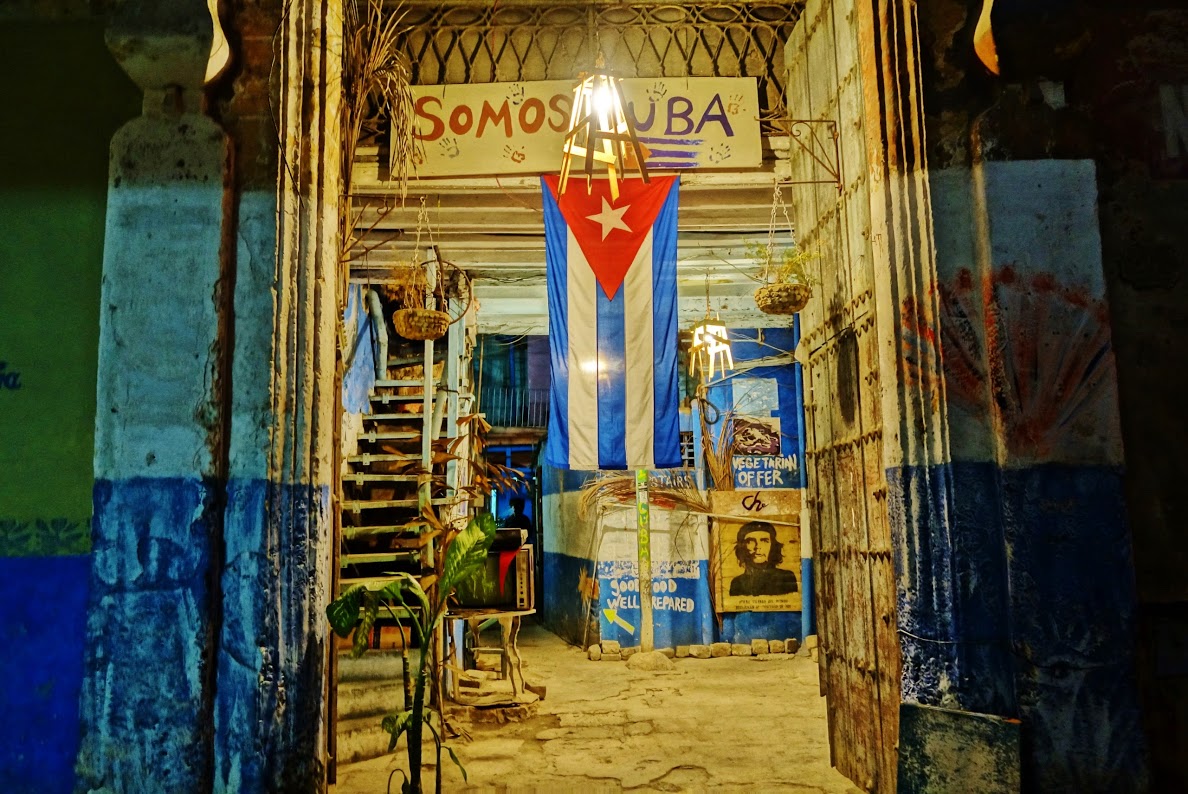
The block letters of the fabled “Bienvenido a Guanabacoa” sign welcomed me to the neighborhoods on the east side of Via Blanca. The colossal face of an African god overlooking the statuesque conch-shell sculpture met my arrival at Los Orishas, the iconic Santeria-themed bar & lounge. The Museo Municipal de Guanabacoa, a museum dedicated to preserving the African traditions transported to Cuba during the transatlantic slave trade, humbly occupied a nearby street corner swarming with pedestrians waiting for the next bus back towards the Havana Bay.
A treasure trove of history, the museum traces the essence of Afro-Cuban spirituality back to the Yoruba people of modern day Nigeria. Also referred to as La Regla Lucumi, Santeria is loosely centered on the divinity of nature and veneration of the Orishas— a pantheon of 400+ pagan Yoruba deities who control the natural forces of life on earth. “Ori” refers to an individual’s head/consciousness, while “Sha” refers to control/protection; in this sense, an Orisha protects one’s inner consciousness, acting as intermediaries between the physical and spiritual dimensions much like a guardian angel.
The native spirituality of the African slaves persevered through the colonial era by adapting elements of Catholicism into its overt practice, fusing the two belief sets into what became known as Santeria, or, the “worship of the saints.” Statues of Saint Lazarus took their place alongside the customary altars of Babalu-Aye, the Orisha of health and wellness, while the religious iconography of the Virgin Mary became nearly indistinguishable from Yemaya, the feminine mother goddess.
Over time, the dichotomy of African Orishas and Catholic saints began to coalesce, as the individual deities became anthropomorphized over a spectrum of avatars. The overlapping characteristics of the biblical figures and African deities helped to synchronize the complementary world views, as the religious perspectives came to be understood as different sides of the same coin. Latin crosses honoring the crucifixion of Jesus came to adorn the traditional Orisha shrines, while practitioners began wearing Rosaries alongside their ileke’s— the beaded-jewelry fashioned in the symbolic color-schemes of their African Orishas.
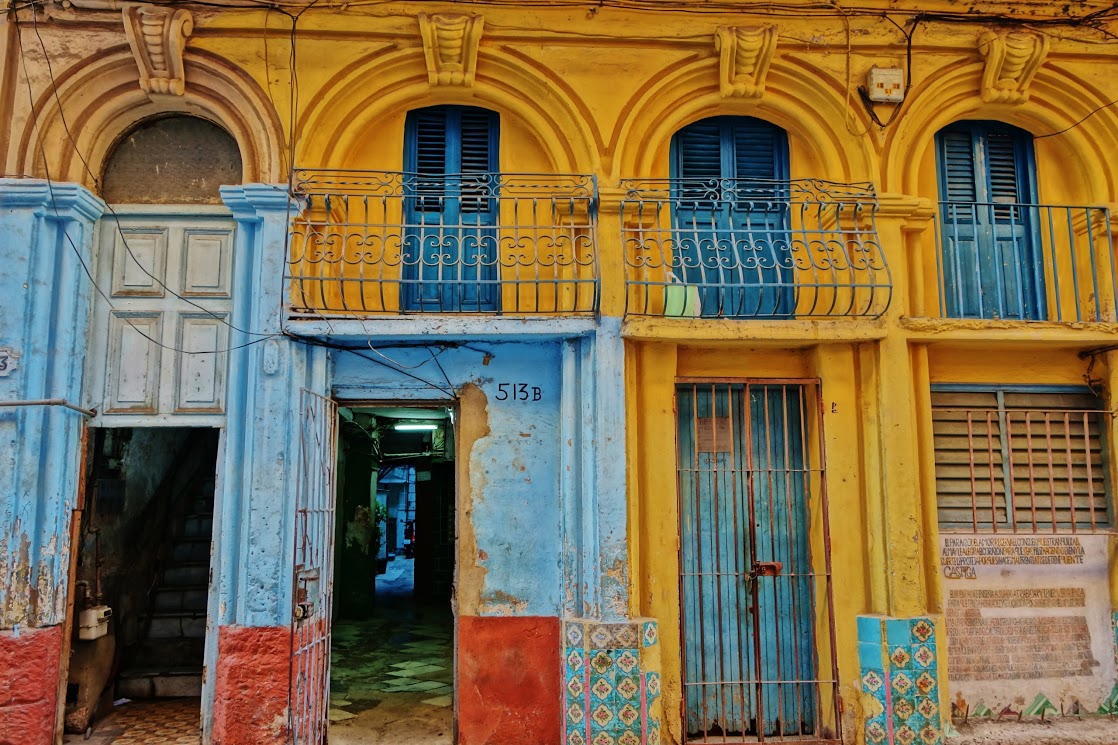
Evolutionary adaptations of the African traditions continued to renovate the visual texture of the faith while striving to keep its spiritual core intact. For example, the sculptural figures of the customary African idols—often referred to in pop culture as voodoo dolls—evolved into circular, pot-shaped tureens called soperas. These consecrated relics were crafted to house the living spirits of the Orishas while camouflaging their true purpose among common household items like cooking pots and storage containers.
Dance steps and drum rhythms traditionally expressed as a form of reverence to the Orishas were tweaked to appease the aesthetic palate of their former Spanish overlords by masquerading the rituals as birthday celebrations and social festivities. Orisha prayers were remixed to the tune of the happy birthday song, while the dance steps evolved into the modern movements associated with rumba, salsa, and other popular forms of Latin-American dance known all over the world today.
Certain African traditions persevered nearly untouched, staying true to original Lucumi roots. I was particularly fascinated with the concept of Ifa divination, a sacred ritual in which a babalawo priest offers spiritual consultations to individuals seeking divine insight and personal guidance.
The process involves the use of a divination chain tossed over a divinity tray, revealing the sacred proverbs, otherwise known as odu’s, conveyed by Orunmila, the omniscient Orisha of ancient wisdom. Visually similar in practice to tarot cards, these consultations provide a direct line of communication with the spirit world, opening the metaphysical gateways of fortune and fate for all who choose to believe.
I was connected with a local babalawo for my own personal consultation later that day. Not the type to insist on payment for his services, Babalawo Maceo preferred only small donations based on his clients faith. Tucked away in the back room of a tumbledown apartment complex, the clandestine world of Santeria came alive.
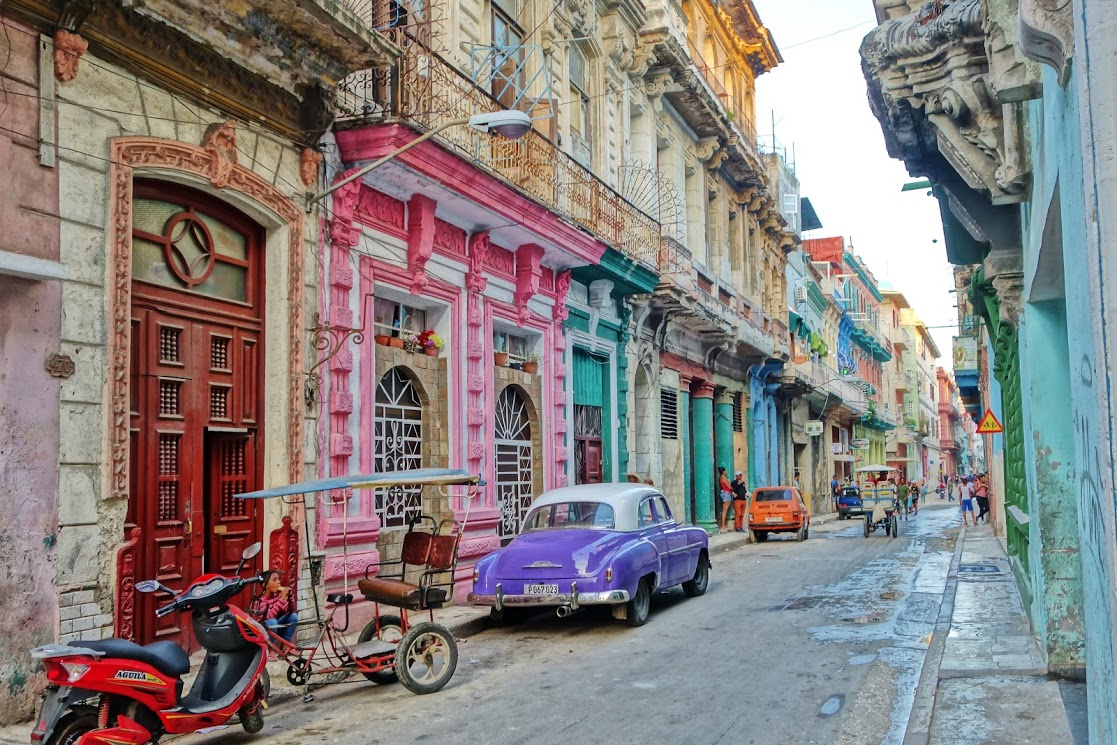
The palm leaves brushed over my head as I slipped through the doorway, tiptoeing by the cowrie shell-eyed god whose shrine guarded the crossroads of the netherworlds. Antique oil lamps saturated the air with bayberry and myrrh, distracting me from the horned goat skull in the corner of the room. Holy water filled a hollowed-out coconut shell, set beside an offerings bowl dressed in a smattering of sacrificial blood. Images of African gods and Catholic saints surrounded me.
Maceo extended a vice-grip handshake upon eye contact, his brawny forearms a not-yet-forgotten vestige of his days as an amateur wrestler thirty years ago. His green and yellow necklace hung below the collar of his white tank-top, intertwining with his chain-linked gold-cross perched just above the bulge of his navel.
His mother had been a priestess of Santeria; their family home had served as a neighborhood Ile, or, spiritual house, for generations. His ornamentations were the symbolic colors of Orunmila, his guardian angel Orisha. As Maceo explained, an Orisha selects its devotees upon ones initiation into Santeria; his brother was considered a son of Shango, the Orisha of thunder and lightning, while his wife identified as a daughter of Oshun, the Orisha of love and beauty.
For the uninitiated, Santeria tradition decrees that Obatala- the king of the Orisha pantheon and father of all Orishas- overseas all human souls until further notice. Depicted as a white-robed sky-god embodying knowledge and peace, Obatala evokes figurative similarities to both Zeus and Jesus.
Dressed in layers of peeling blue paint, the spiritual epicenter of his home had been dedicated to Yemaya, the guardian Orisha of his late mother. The sanctuary was brimming with candle-lit Orisha shrines surrounded by coconut-shell offering-bowls filled with cowry shells and palm nuts. Stacks of ornate soperas towered in a totem-like arrangement from each corner of the room. Shelves stood jam-packed with bundles of dried medicinal plants, glass jars filled with hodgepodges of bones and organic matter, and plastic bottles chockfull of mysterious concoctions and magical potions.
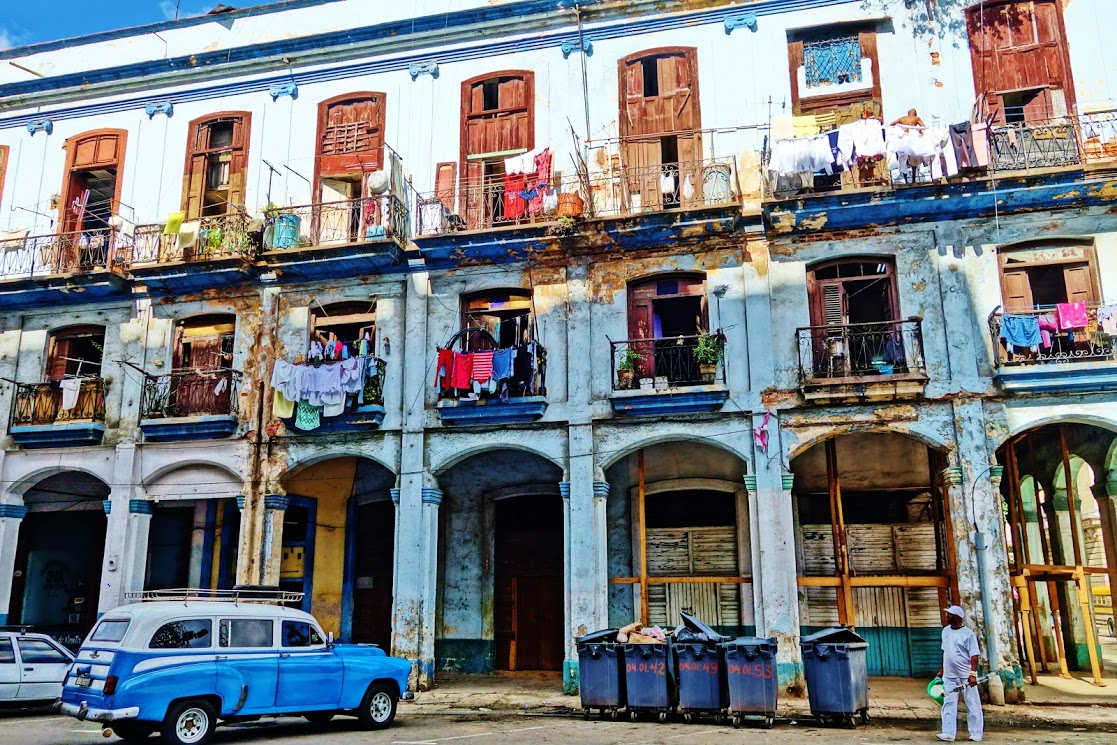
Maceo situated himself in the center of a straw mat, placing a copy of the Treaty of the Ifa Odu within arm’s reach of his wooden divination tray and opele- a divination chain featuring eight linked-palm shells. The literary corpus of Ifa divination contains the proverbs and prophecies signified by the landing positions of the opele.
Following his lead, we dipped our fingers in the holy-water-filled coconut shell and motioned the sign of the cross while reciting a prayer. Maceo proceeded to tap the center of his divination tray with the green & yellow handle of his horsetail whip, summoning the ethereal presence of Orunmila.
Maceo pinched the opele from its center, allowing four pairs of palms nuts to hang side by side. He gazed it over the palm of my hand, swaying back and forth a single time before dropping it gently in the center of the divinity tray.
The concave and convex landing positions of the shells were recorded in dual columns of 1’s and 0’s, producing a matrix-like code correlating to the 256 Odu’s concealed within the bindings of his holy book. Following a series of probing questions and successive opele tossing’s, Maceo reflected on my diagnosis.
Maceo spoke of my ase—the Santeria concept of a divine spiritual energy which makes up all matter in the universe. An unbalanced ase was diagnosed as the primary cause of my ailments, and I was advised that a more mindful approach to my stream of conscious thought would attract the peace and prosperity that I so desired.
He offered an additional solution; Maceo wanted to create an amulet, consecrated with the spirit of Orunmila, for my own protection. Fashioned from a small conch shell, the amulet could harness the powers to ward off negative energies like a metaphysical force field. To illustrate its significance, he pulled out his own conch shell amulet which he kept eternally burrowed in his front pocket.
The step-by-step process of consecrating an amulet remains a secret to the non-initiated, however it involves ritual animal sacrifice- in my case, a chicken- and the creation of a sanctified type of cement. Once the cement has been properly blessed, it’s poured inside the shell and set with green & yellow beads, encapsulating the living spirit of the Orunmila. The animal is cooked and served to the community.
In a sense, the Santeria practice of animal sacrifice can be somewhat understood as an elaborate ritual blessing performed before a meal; this form of religious tradition prefers that prayer takes place when the animal is killed, rather than when the animal is consumed at the dinner table.
We feasted together with Maceo’s extended family as the amulet needed time to desiccate, passing bottles of moonshine rum while sharing tales of Orisha legends. A plate full of food sat undisturbed at the far side of the table, a symbolic offering to the presence of Orunmila.
Dinner turned into dancing, friends and neighbors converged, and Maceo’s home transformed into an impromptu disco-tec. Unfettered merriment ensued, interrupted only by periodic flurries of bell-ringing followed by shots of rum in dedication to Ogun, the Orisha of metalsmithing and rum-making.
If love, peace, and happiness are the product of one’s spiritual approach to life, then I owe a debt of gratitude to Maceo and his Santeria community; everyone was so full of energy and life- ase, as they say in Cuba- that I debated skipping my flight home. Their enthusiasm was an ironclad state of existence; their shockwaves of optimism left me speechless and spellbound.
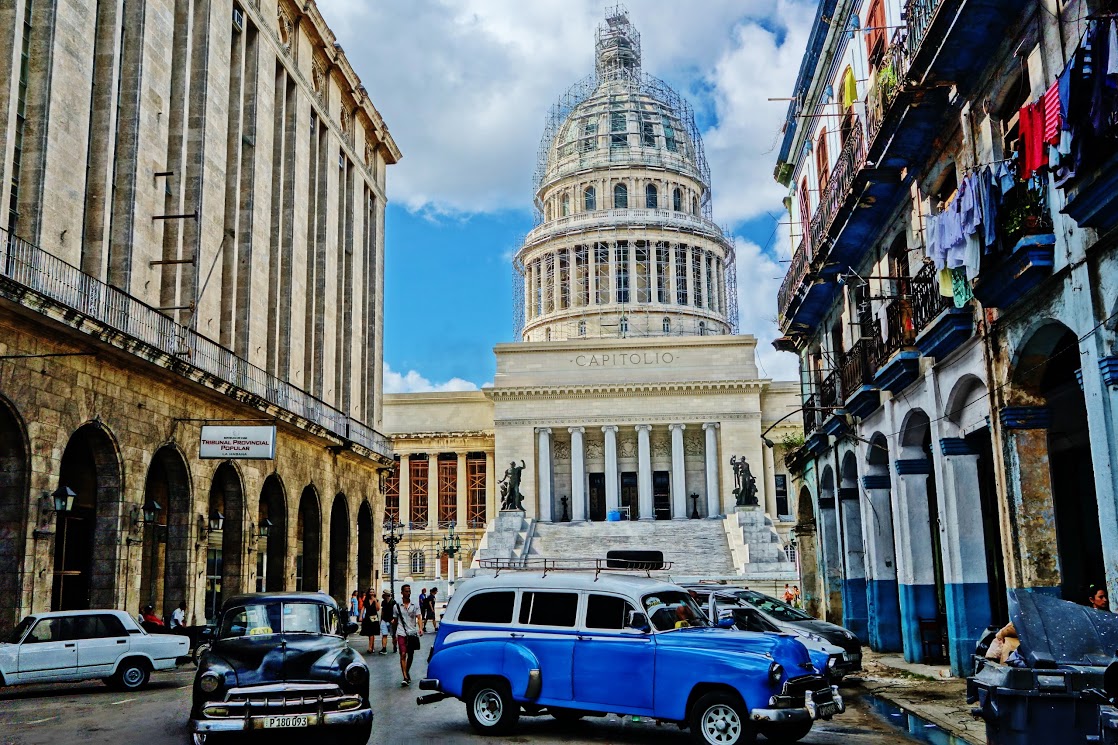
Maceo presented me with my personal amulet towards the end of the night, assuring me protection from evil and a well-balanced ase. I had to wonder, is his concept of “evil” interchangeable with my view of “negativity”? For in my journey beneath the surface of Cuban Santeria, I surely saw none of it; only positive vibes reigned supreme.
With the amulet safely guarded in the depths of my pocket, I maneuvered past the palm leaves hanging from the doorway, once again passing by the shrine of Elegua, the conical-figured cowry-shell-eyed Orisha of the crossroads. As the sun was setting, I set a flame to the tip my Cuban cigar, slowly puffing on its glowing embers as an old boom box blasted the thumping rumba rhythms from the street corner behind me.
Seducing like the swiveling hips of a salsa dancer, Havana personifies the Santeria concept of ase with the magnitude of a quasar. Perhaps nowhere else harmonizes the expressive elements of the human spirit like Havana, a place where worlds collide and rhythms reinvent themselves in perpetuity. This city is more than a destination; it is a force of nature, a collision of abstract possibilities, and a dance floor for the soul.
About the author: An educator and freelance writer in the Washington, D.C. area, Kevin Dimetres has a passion for cultural expressions and good conversations. His stories have been published in The Washington Post, Passion Passport, Immersion Travel Magazine, GoNOMAD, InTravel Magazine, and Transitions Abroad. A collection of his stories can be found on KAtaraxia.com.


